Margaret Howell, the British clothes designer who is big in Japan
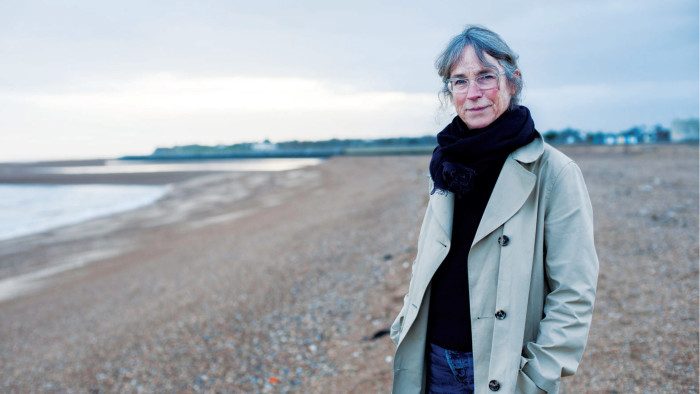
Simply sign up to the Life & Arts myFT Digest -- delivered directly to your inbox.
In 1969 Margaret Howell graduated from Goldsmiths College with a degree in fine art and a dilemma. “I had that horrid feeling,” she says, “I had no idea what to do.” First, she applied for a job as a BBC make-up artist but didn’t get it. Then she applied to study interior design at the Royal College of Art but wasn’t accepted. So Howell focused on what she had always done: making things. It didn’t take long for her papier-mâché necklaces to get noticed. They were featured in Vogue magazine and she was even commissioned to make a beaded costume for Elizabeth Taylor. Still, she wasn’t happy. “The shops wanted something different every six months, but I wanted something more,” she says
So Howell went back to another childhood passion: making clothes. This time, rather than following shop patterns, she came up with her own ideas. Four decades later, she is one of Britain’s most respected designers. Howell’s clothes don’t shout, they seduce: comfortable, classic pieces tailored in traditional British fabrics, such as Harris Tweed, corduroy, Irish linen, and Scottish cashmere. “They’re materials that have been perfected – they can’t get any better, and they do their job,” she says.
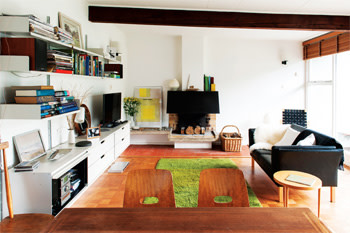
Though she dislikes the word, her name is now an international “brand”. The Margaret Howell company has a £60m annual turnover and shops in London, Paris and Tokyo, as well as an online store. She was made a CBE for services to the fashion retail industry in 2007, and is one the RSA’s Royal Designers for Industry. And yet for all the accolades, Howell remains modest and well-grounded.
Much of her week is divided between her house in Lewisham, southeast London, and her headquarters in the city centre, but she also spends an increasing amount of time at her second home on the Suffolk coast. The property is one of a row of six holiday homes – simple geometric fronts, topped by flat roofs – designed by the Swiss-born architect Rudy Mock. At the time they were built, in 1965, Howell says local residents dismissed them as “rabbit hutches”, but their 1960s modernism has aged well.
Inside the property, an open-plan kitchen flows into the main living space, a long white-walled room with a south-facing wall of glass windows and doors. “It’s a tiny kitchen,” says Howell, “and my aunt said she’d have ripped it all out and redesigned it from scratch, but I suppose I have this appreciation of the past.”
The minimalist architecture matches the stark Suffolk landscape that surrounds the house. “I love the flatness, I love the skies, I love the changing light,” says Howell. “I’ve always swum in the sea and love the feeling it gives you afterwards of wellbeing. Work is pressurised but here I have space.”
Howell was born in 1946 in Tadworth, Surrey. Her father was a managing clerk in a solicitor’s office and her mother worked in a dress shop until the birth of her three daughters. When Howell talks about her childhood, she often focuses on clothes. “My mum and dad occasionally went ballroom dancing and Mum had this blue chiffon dress. It used to hang on the hanger like a pencil and I used to think ‘How did she get into it?’,” she says. “Dad liked to garden and he had a raincoat in the shed. It had this soft worn-in quality that I loved, and I tried to emulate it when I made my first raincoat.”
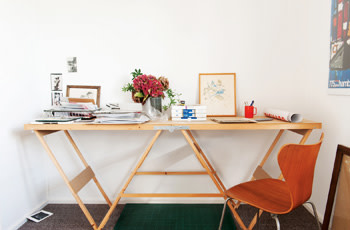
Though Howell studied in London in the late 1960s, she was never part of the “scene” and did not like the clothes. “The art-school beatnik look – jeans and black jumpers – appealed to me more than Carnaby Street and the King’s Road. I was more conservative, more interested in style than fashion.” Today, she is wearing a blue cashmere roll-neck, jeans and leather Converse All-Star trainers. “If you have an active lifestyle, you need practical clothing.”
Howell made her name with menswear, opening her first shop in 1977 with Joseph Ettedgui, founder of the Joseph retail chain. “In the 1970s men’s fashion was very self-consciously designed, but a lot of men didn’t want to parade themselves in that way. They wanted something contemporary but not showy.” Drawing inspiration from work wear, uniforms and country clothing, she cut a distinctive path. “I was very surprised when men bought the clothes and they would say how good they felt. You never heard women talking about clothes that way.”
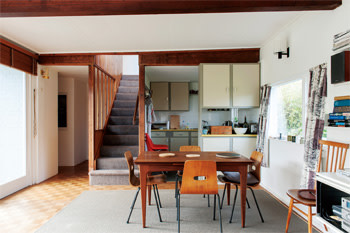
Howell’s clothes are not cheap – one of her shirts could set you back £200, a skirt more than £300 – but they are designed to last. As a child she remembers saving up for a red Shetland crewneck jumper: “You could still wear it today. I remember looking after it so well and loving it,” she says. “With clothes, I have a few items I wear all the time.”
While its growth in Europe has been slow but steady, the company’s success in Japan has been meteoric. Today Japan has 88 Margaret Howell outlets and Asia accounts for 80 per cent of international turnover. “I think they like the quality, and the simplicity,” she says. “There’s nothing better than the pure aesthetic of their traditional temples and homes, so minimal and pared back, maybe that’s what they respond to.”
Overseas expansion and the creation of the diffusion line MHL, has meant a change in Howell’s working pattern. Since about 2002, she has been the company’s “design director”, overseeing two deputies rather than doing all the work herself. “The company was growing,” she says, “and it had to follow the usual format of doing collections at certain times and showing for the press. One person couldn’t cope.”
Over the past decade, Howell has become increasingly interested in product design and architecture. Her store in Wigmore Street, central London, has hosted book launches and exhibitions, focusing primarily on British talent. “When we started, people like Charles and Ray Eames were getting a lot of recognition, but we had [designers] like David Mellor, Robin Day and [designs such as the] Anglepoise, so we put on exhibitions to show the qualities of those designers,” she says. “I wanted more going on than just clothes – 30 years of doing one thing is a time when many people want to branch out.”
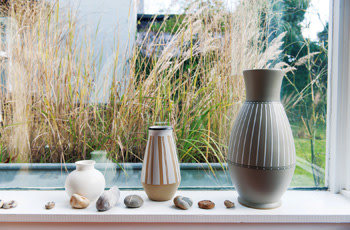
Howell’s home in Suffolk showcases the modernist furniture that she champions. There are pale wooden armchairs and a table by the Scandinavian designer Alvar Aalto, curtains and bed throws in Lucienne Day patterns and a white shelving unit by the German minimalist Dieter Rams.
The overall feel is uncluttered, and the few objects to be found are carefully chosen and positioned. Denby and Poole pottery have been put next to a window in the study, a poster for Bauhaus artist Josef Albers is flanked by yellow flowers, while a Nikon camera that Howell has used for 35 years sits on top of a Japanese box. “I like a clear space,” she says. “Some people have many things that do the same job – I just like one that does it right.”
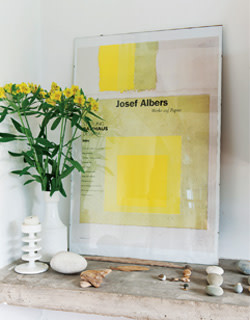
Despite her taste for minimalism and the austere landscape, you do not need to spend much time with Howell before discovering her gentle, maternal side. With the Christmas holidays fast approaching, and her daughter expecting her first child early in the new year, she is looking forward to cooking, seeing friends and family and knitting in front of the television.
“I’ve always liked Christmas, the domesticity of it, making my own puddings and mincemeat, just being at home and being a mum,” she says. Her son Ed, a talented guitarist, died two years ago and is still very much in her mind. “Christmas was always so lovely when we were together.”
Howell’s most precious possessions are those with strong sentimental associations: family photographs, pebbles collected by her children on the beach, furniture and clothing that remind her of certain people and places at particular times. Her design philosophy is all about longevity, creating things that work so well and have such timeless style that you come back to them again and again. “I love the idea of making something that goes on for a long, long time,” she says. “It’s about finding a lasting style – not a fashion thing.”
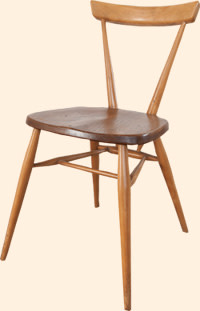
——————————————-
Favourite thing
Howell chooses an Ercol stacking chair as her favourite object.
“I bought it in the East End on a day out with my daughter,” she says. “The shop specialised in Scandinavian furniture, but in the back there was this Ercol chair. I just fell in love with it . . . It’s like Shaker furniture in its simplicity.”
Comments